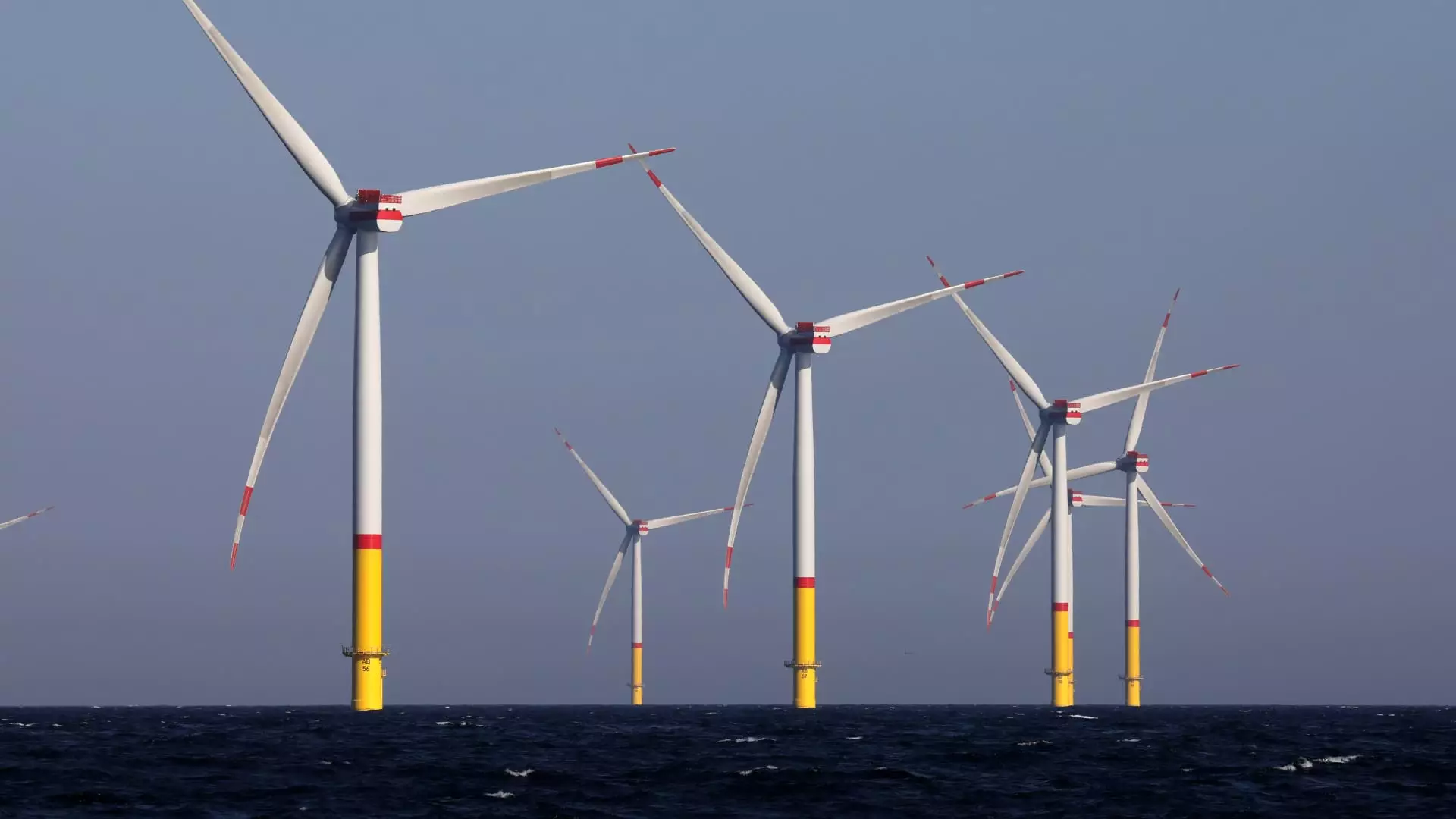The recent decision by the Norwegian energy giant Equinor to resume construction of its Empire Wind 1 offshore wind farm off the coast of New York reveals the underlying tensions and inconsistencies in American energy policy. After being stalled by an order from the Trump administration, the project is now set to move forward thanks to a newfound bipartisan agreement led by Governor Kathy Hochul. But this situation speaks volumes about the fragile landscape of energy politics in the United States, where ambitious renewable energy initiatives are frequently put on the chopping block at the whim of political power shifts.
Equinor’s Empire Wind project is a beacon of hope for advocates of renewable energy and climate action. Positioned to generate a staggering 810 megawatts of electricity—enough to power approximately half a million homes—it represents not just a significant stride towards sustainability but also the creation of 1,500 union jobs. Yet, the tumult caused by the Trump administration’s attempts to assert control over offshore wind projects undermines these advancements. This ongoing saga reflects a broader stance towards clean energy development, one that wavers and shifts with changing political tides, and it raises the question: can America achieve genuine energy independence while battling internal strife?
The Clash of Ideologies: Clean Energy vs. The Status Quo
The Biden administration’s eventual approval of Empire Wind shows a contrasting commitment to renewable energy compared to its predecessor’s complete disregard for such initiatives. Interior Secretary Doug Burgum’s order to halt construction was steeped in claims of rushed approval and insufficient analysis. While the scrutiny of energy projects is vital for environmental oversight, there is an undeniable irony in the Trump administration’s rhetoric. Despite promoting an agenda aimed at achieving U.S. energy dominance, it paradoxically sought to impede clean energy solutions that could benefit millions.
Trump’s repeated denunciations of wind energy—targeting everything from avian fatalities to financial inefficiency—reveals a disconcerting anti-renewable narrative that still resonates in certain circles. His infamous executive order halting offshore wind projects serves as a grim reminder that political ideologies can often overshadow scientific and economic realities. Thus, the fear that other permitted renewable projects could similarly be jeopardized speaks not just to the risk of halted job growth but also to existential concerns about the future of clean energy in America.
The High Stakes of Energy Economics
One cannot overlook the substantial economic implications tied to the Empire Wind project and others like it. Investments pouring into renewable initiatives are evidence of a trend pointing toward a sustainable energy future, but the pushback from traditional energy institutions remains a cumbersome obstacle. As Governor Hochul remarked about the economic benefits tied to increased national access to reliable natural gas, it is essential to recognize the duality that exists within America’s energy framework.
While acknowledging the promise of natural gas as a transitional source of energy, it is equally crucial not to disregard its ramifications for climate goals. The dichotomy of aligning with fossil fuels while espousing renewable growth creates a complicated narrative that could inhibit true energy independence. The capability of offshore wind farms to lower utility costs and provide cleaner energy should not merely be ancillary talking points but rather the centerpiece of a well-constructed energy policy that prioritizes genuine sustainability over temporary gains.
The Path Ahead: Unity or Division?
As the construction of Empire Wind resumes, it remains to be seen whether this will be a catalyst for future projects or merely a stopping point in a cycle of political meddling. The collaboration between both sides of the aisle, while commendable, needs to extend beyond temporary agreements into a robust, long-term vision for renewable energy. Will dialogues regarding energy policies evolve into a unified approach that prioritizes the well-being of both the economy and the environment? Or will the persistent clash of ideologies continue to obstruct our path to a sustainable future?
The ambitious plan for Empire Wind showcases the vital integration of private enterprise, state policy, and federal regulations. What should once be a synergistic effort is often mired in contentious politics. It raises serious concerns about whether America can rally around the common objective of transitioning to clean energy sources or if we will find ourselves perpetually mired in partisan disputes that hold back innovations that could ultimately elevate our nation’s energy independence. As the stakes rise with incoming climate-related challenges, the urgency to act becomes more pronounced.

